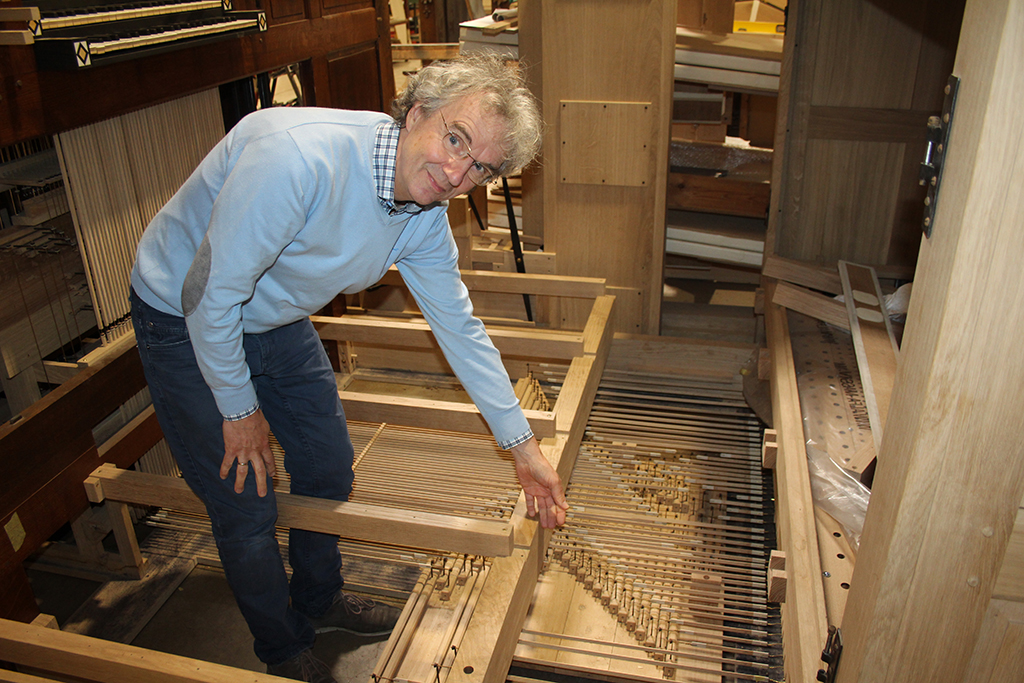Organ builder Guido Schumacher (Image: Andreas Lejeune / BRF)
–
Guido Schumacher got away with a black eye. So he himself assesses the situation retrospectively. “We are very close to the dam. So when the river overflowed its banks with us, it carried little rubble, little rubbish, and few tree trunks. That is why there was virtually no damage to the building. Only what was on the outside of the wood was partially washed away, ”explains Schumacher. “Compared to the damage in the lower town, where entire houses are uninhabitable, I can say that it was not dramatic for us.”
In the driveway the water was up to 50 centimeters high. It is different in the production facility. Here it was only a few centimeters. But they were already enough to cause direct and indirect damage. “With the instruments that were partially set up in the assembly hall and that came into contact with water, it is of course the case that these parts swelled directly. But the other parts are also swollen because the humidity in the room was simply too high. At first we had a humidity of 79 percent. Usually we’re between 55 and 60 percent. That’s a problem.”
A few days after the flood, Guido Schumacher installed a dehumidifier. The assembly room was progressively dried out. This step is done as carefully as possible, after all, any further damage to the sometimes centuries-old instruments should be avoided.
A total of five organs are currently in the assembly hall, four of which are being restored. “The most damaged instrument is for Bruges Cathedral. This is a restoration of an organ that dates from 1719, so a historically very valuable element, but where many parts have also been made new. A lot of mechanical things, such as the connection from a button to the valves, have swelled. Some parts need to be made from scratch, for example leather elements that have just got too damp. The leather is no longer supple enough, everything has to be replaced. “
In general, the company works with many sensitive raw materials: leather, felt, parchment – all with their own purpose. However, Guido Schumacher is not sure whether the materials can still be used as intended. But that is exactly what has to be checked – for insurance reasons alone. “Normal insurance experts logically have no idea about organ building. The fact is that the damage caused by excessive humidity cannot be documented. You cannot see in a photo whether a leather is still supple enough because it has absorbed too much moisture and is now drying. “
The company is covered by fire insurance, said Schumacher. Nevertheless, each instrument is insured separately again. So it has to be found out which insurance will apply in which case. “That’s why I had an expert come on my own account in order to correctly assess the damage and negotiate with the insurance company. This is a retired organ builder who works as an expert for the Walloon Region in the field of monument protection. “
At the Schumacher organ builder, it becomes clear how complex the processing of floods can be – an experience with which the organ builder will not be left alone.
Andreas Lejeune
–


